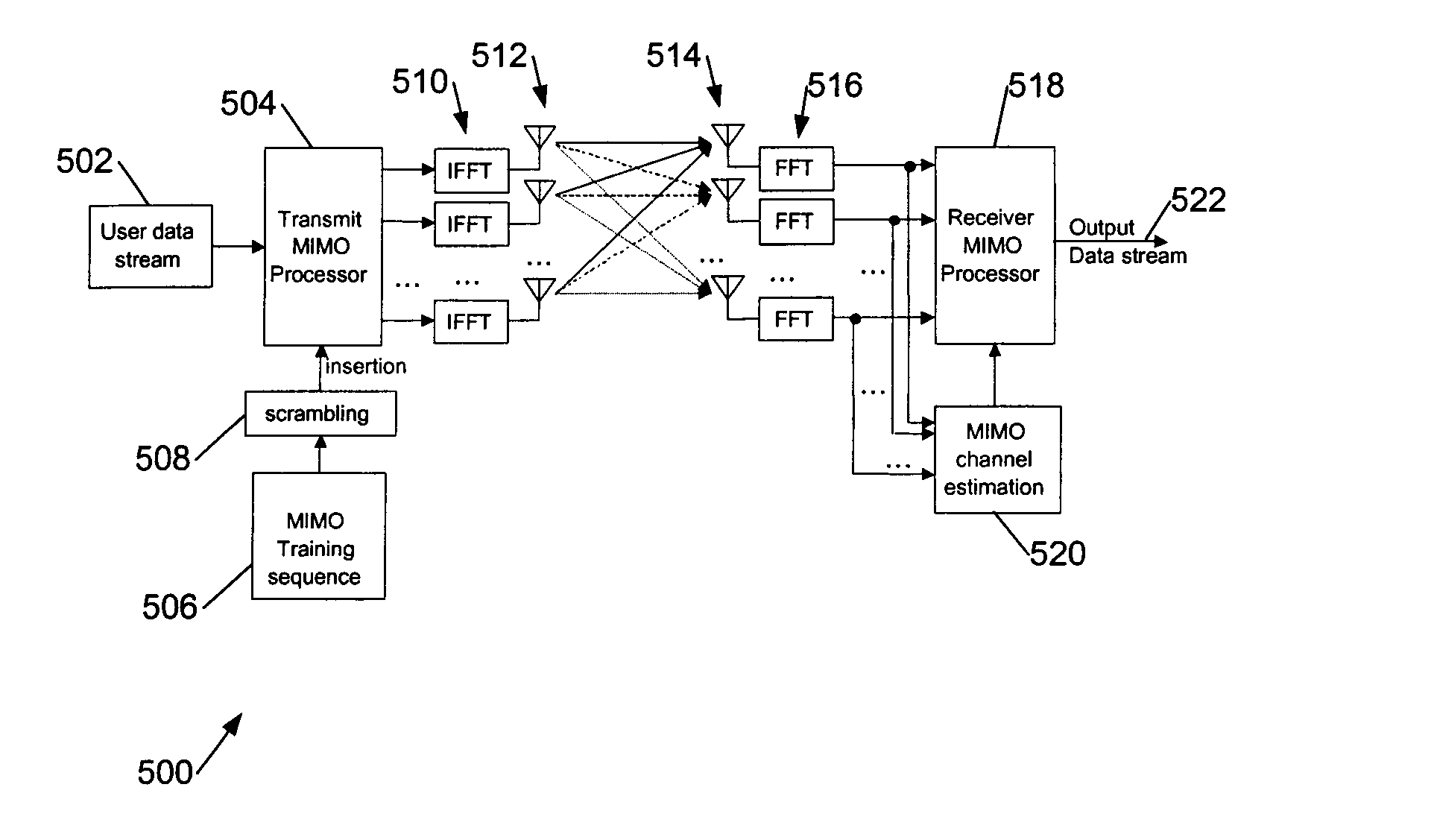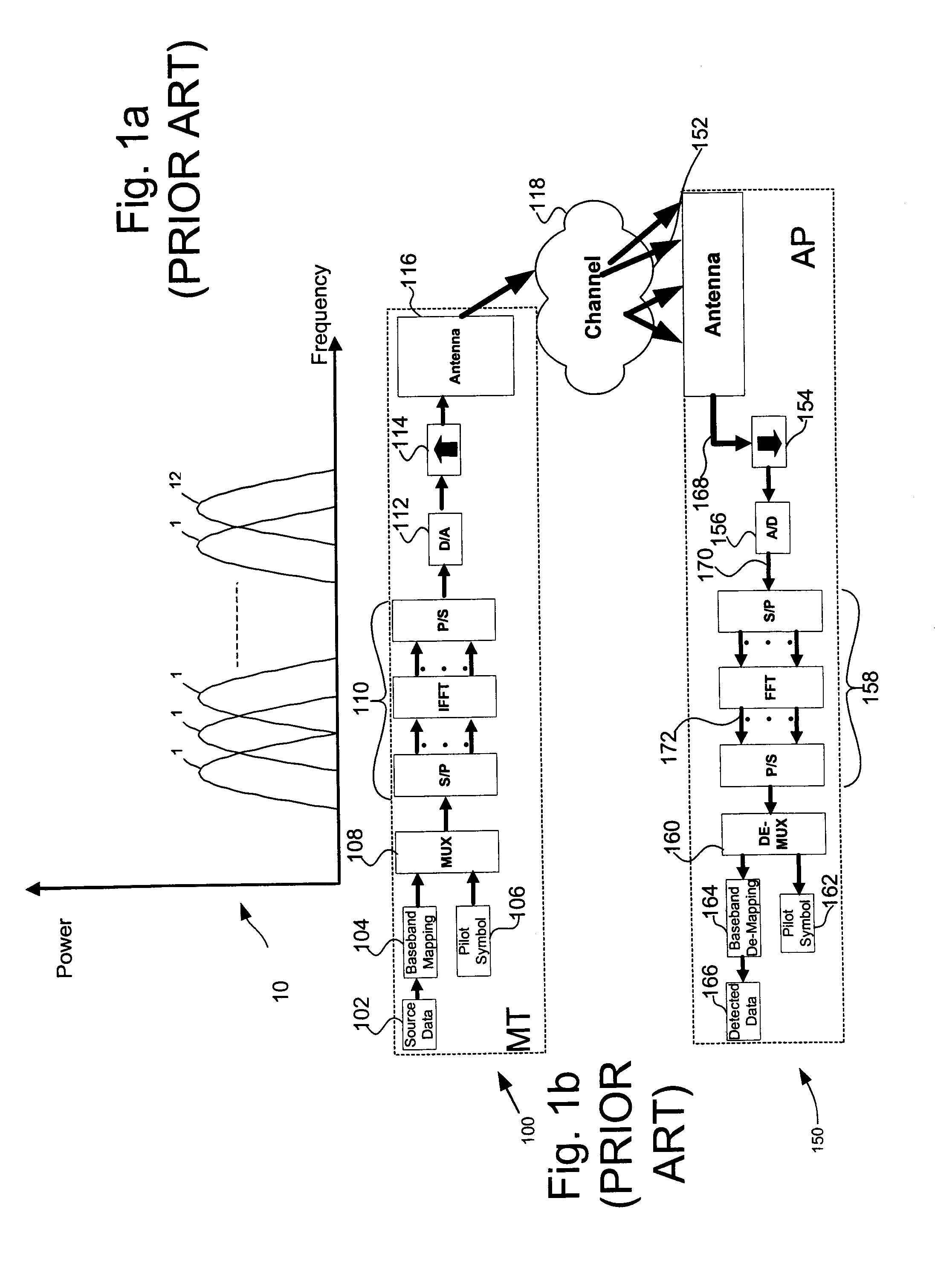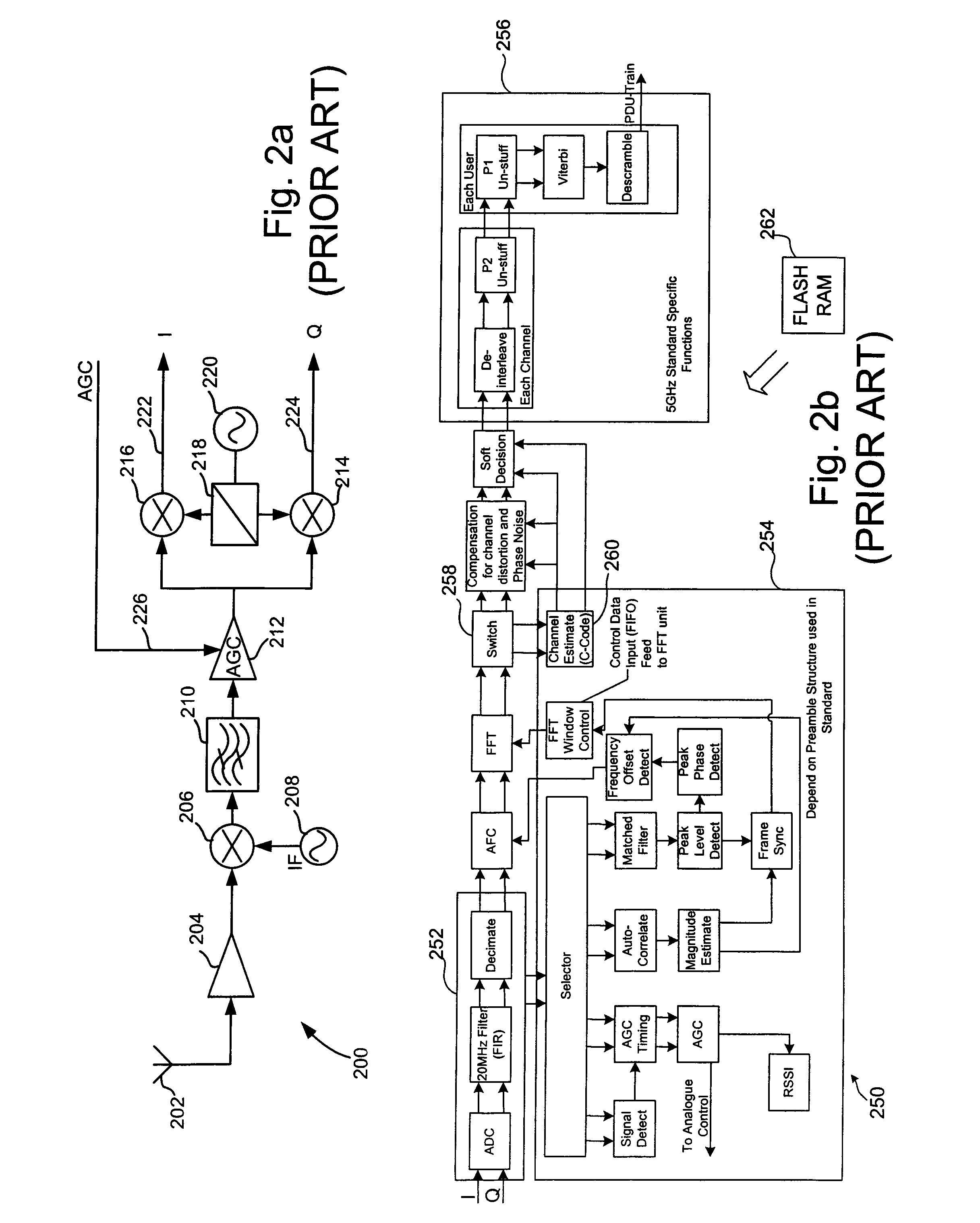Transmission signals, method and apparatus
- Summary
- Abstract
- Description
- Claims
- Application Information
AI Technical Summary
Benefits of technology
Problems solved by technology
Method used
Image
Examples
Embodiment Construction
[0070] Referring again to Equation 1 above, it has been recognised that this equation can be satisfied by training sequences given by Equation 2 below:
Xk,k(m)=exp(j2πkmL / K),0≦k≦K−1, 0≦m≦M−1 Equation 2
[0071] In Equation 2 m and k run from 0 to M−1 and from 0 to K−1 respectively or, equivalently, from 1 to M and from 1 to K respectively. Index m labels a transmit antenna and values in a training sequence to be transmitted from that antenna are labelled by index k so that a training sequence transmitted by a transmit antenna has a length K. The index k can label subcarriers so that, for example, each value Xk is transmitted on a different subcarrier (in which case K is preferably the total number of subcarriers) or the training sequence values may be distributed in some other way, for example, k labelling alternate subcarriers and the training sequence Xk being distributed over two OFDM symbols, half in one symbol and half in the next. The skilled person will recognise that numerou...
PUM
 Login to View More
Login to View More Abstract
Description
Claims
Application Information
 Login to View More
Login to View More - R&D
- Intellectual Property
- Life Sciences
- Materials
- Tech Scout
- Unparalleled Data Quality
- Higher Quality Content
- 60% Fewer Hallucinations
Browse by: Latest US Patents, China's latest patents, Technical Efficacy Thesaurus, Application Domain, Technology Topic, Popular Technical Reports.
© 2025 PatSnap. All rights reserved.Legal|Privacy policy|Modern Slavery Act Transparency Statement|Sitemap|About US| Contact US: help@patsnap.com



